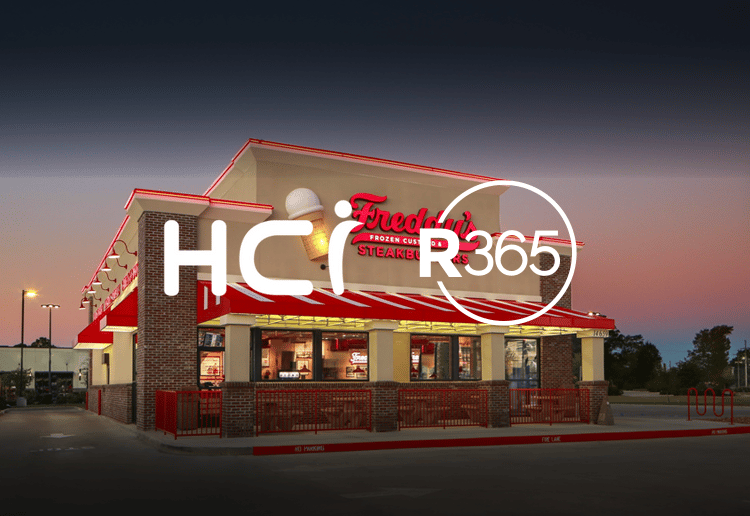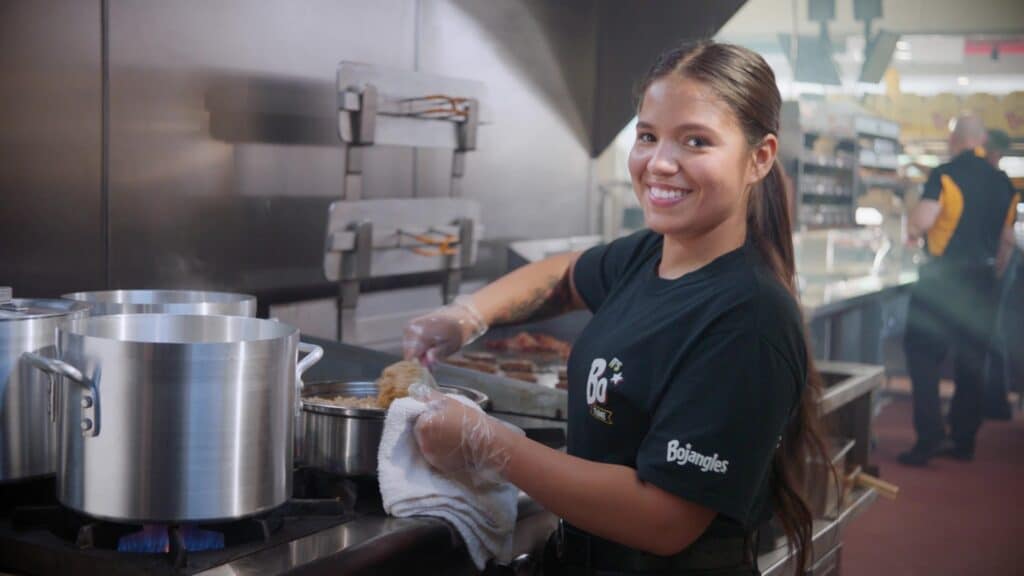This interview shares highlights from our webinar How To Streamline Franchise Operations. Watch the full webinar now.

Evan McKean is a district manager for HCI with over 25 years of restaurant industry experience. He currently oversees nine locations across three states. Evan spends his time developing his operations in-house, as well as holding an integral position in his franchise organization. Evan and HCI use Restaurant365 for all aspects of inventory management, adjusting yield percentages, adjusting products, PM apps, implementing daily inventories, etc. The company leverages R365 to analyze their inventory on a weekly basis for financial accountability and success.
Mark Cohen is the leader of the Solutions Architect team at Restaurant365. Mark began his career nearly 20 years ago as a corporate trainer for a large national restaurant group, helping it grow to 120 units. He then went to work for two LA-based celebrity chefs as a general manager at the Sea Dad and Border Grill restaurants before eventually moving into the corporate office as integrated technology and systems manager.


HCI is a restaurant group that operates multiple concepts across seven states with about 3,000 employees. The group’s primary brand is Freddie’s Frozen Custard & Steak Burgers, currently operating 34 franchises with more coming.

What led HCI to use Restaurant365?

R365 was instilled before I started, which was one of the things that was fortunate for me. When I joined, I was doing the Sonic brand down in Atlanta, Georgia, and we actually used 365 there as well, primarily for financials, P&L statements, invoices, and so on.
It’s the ease of it. Just the ultimate simplicity, the organization of the system, the compatibility that it has with all of our POS systems, and the data you’re able to retrieve out of the 365 system. It’s just very easy to communicate and poll and show everybody anything you want.

One of our first initiatives was to get an Actual Vs Theoretical (AVT) program for all your locations, and you were a big part of helping with that list. Can you walk us through what that workflow or weekly inventory workflow looks like for you with Restaurant365?

Sure. Before we were really using the AvT side, it was a very simple and basic process. It’s Wednesday night or Thursday morning. You count your 200+ items and then you just hope that it was a good number on your P&L statement.
We started diving in three years ago, right before COVID, looking at what other reports are available and what data we can retrieve from the 365 system to help us reduce our Cost of Goods Sold or give us better oversight of certain items.
And then I found the AvT reporting. That let us see the variances in what was actually used and what we’re counting versus what’s actually being rung into the system, which is perfect for us.

Have you changed your inventory process in any way?

About 18 months ago we switched up and started having all 34 locations start doing a daily inventory. But we didn’t want to overwhelm them. We knew that there are 200+ items, but there are only five to ten that are of really high importance.
Every store does it. They can do a night counter, a morning count, and they count just those five items that are giving them problems. Then they’re able to run the same exact report, the AvT, and see if there were any issues from the day before. It’s an easy way for them to see if there is possibly a miscount, which is what we’re hoping for most of the time.
When there’s an issue, it helps us look at waste portion controls and unfortunately theft in certain cases. And that’s just the simple one. It’s more for their oversight on a daily basis. Thursday morning, today actually, has been a lot of fun for me, as every Thursday is, as they do their full 200+ item inventory.
I created a spreadsheet and they’re able to take every individual category from their bread category, beverage, canned, dry custard, meat, frozen, whatever the categories are. And they’re able to list out what all their CoGS were for each individual item. Then they can break down and separate out each category and see what’s the really high-cost item or what’s really swaying the food cost percentage one way or another.

How does that work with your accounting process?

So the managers fill out that itemized spreadsheet, which then goes to our accounting department. In the accounting department, they simply collect all 34 locations. Like you said, “competition is healthy.” We’re able to list every single store side-by-side and say, “hey, you know what? Here are all 34 locations. and here their average costs,” and then everyone can easily look at it.
If I’m the general manager, I can look at that and say “alright, well, everybody’s running about 3.5% for beverage and for some reason I’m running at 4.7%. And I don’t want to be the black sheep. So what do I have to do?” Without comparing apples to apples, you’re just going to assume that you’re fine like everybody else.

I love that we’re counting the top five items every day, because then we get to the weekend inventory and we shouldn’t have any issues. We would have squashed them in real-time.
So you’ve rolled out this program to the entire company. Do you have any advice for someone trying to roll out an inventory program?

You know, inventory is such a big thing. The first thing you’re showing is financial statements. The first thing that’s listed below sales is our food cost.
But the biggest thing we look at is how do we keep it simple. Don’t get so overwhelmed with thinking you have to share every single report, every single line with every single person? Find the things that really focus on what you’re trying to accomplish and pertain to your goal and share that with your team.

Any big wins past or present with AvT that you want to share?

Of course! We obviously talk a lot about the financial impacts, which is ultimately, what a lot of us want, epecially for me personally as a district manager.
But a lot of times with this kind of stuff, the overall learning curve and development of some of our managers has drastically improved the simplicity of the entire system. Like I said, I can’t stress enough how easy this is and how great these reports are.
It didn’t matter if I hired somebody externally as an inventory manager or promoted somebody internally, it would be a two to three-month process to get them up to speed to really understand the reports and what they were doing. With AvT I’ve been able to drop it from two to three months to two to three weeks.
And it’s great. They’re becoming a lot more successful and comfortable in their roles a lot quicker and they’re able to delegate and teach and coach up all their subordinates as well. It’s improved our pipeline. I haven’t had to externally hire a general manager, and I think I hired one assistant manager in the past two and a half years because we’re able to internally develop people with these systems.
To find out more about how Restaurant365 can streamline franchise operations, see the full webinar here.



